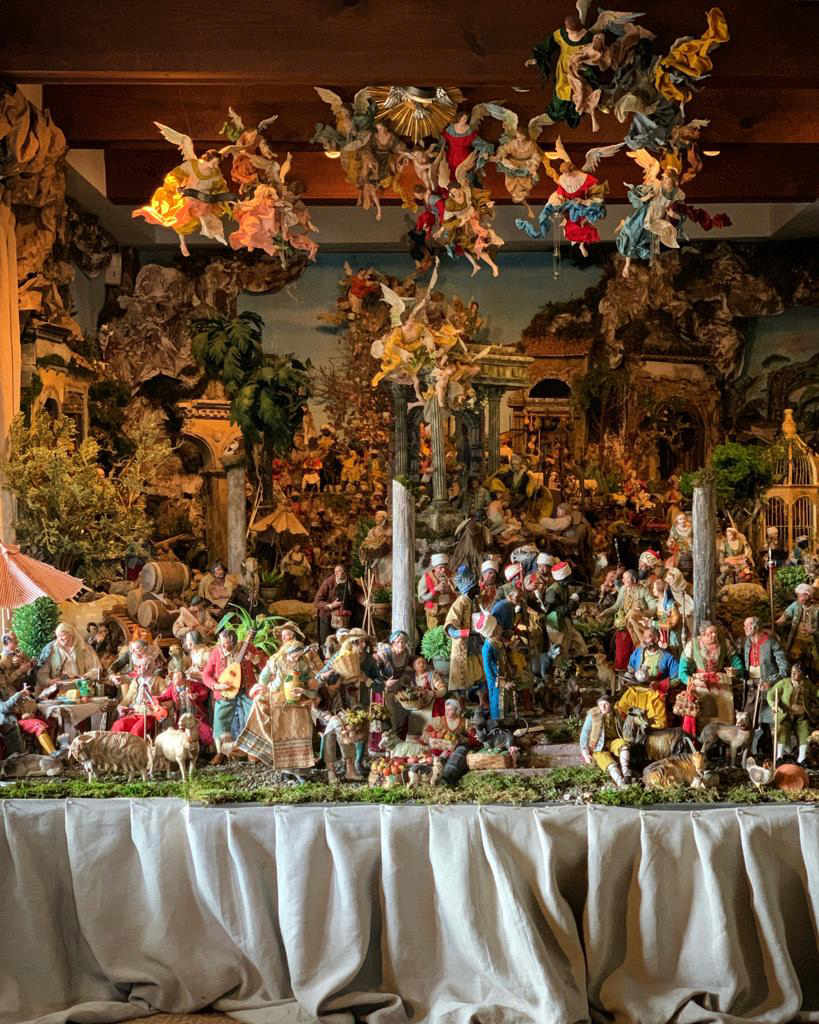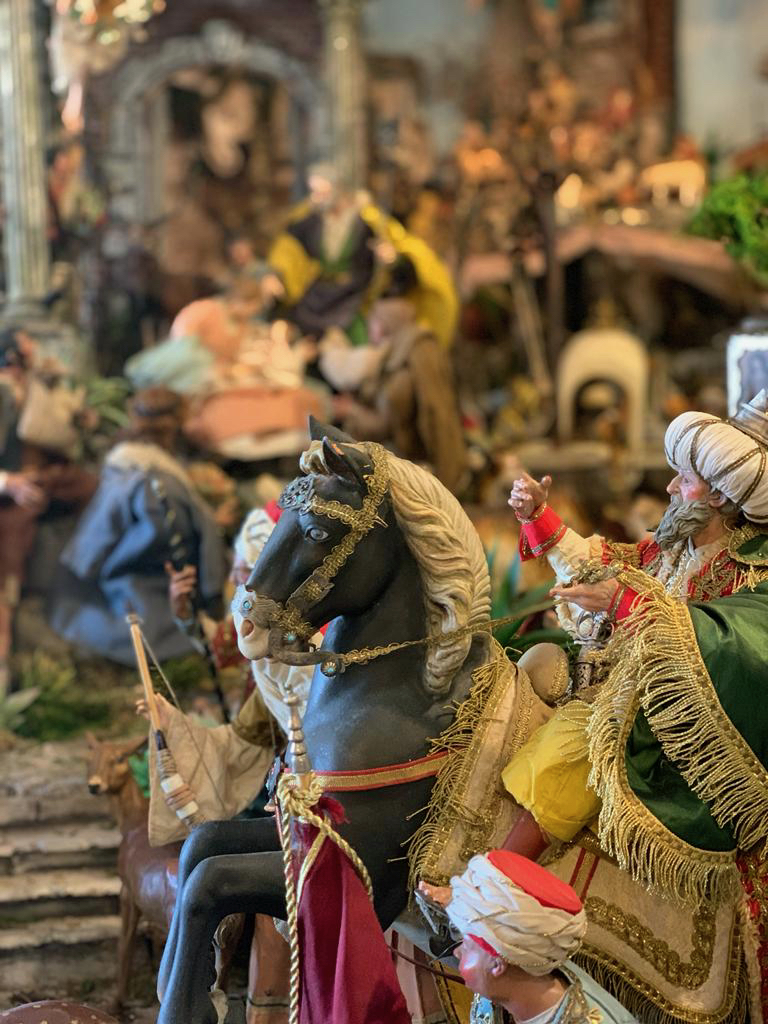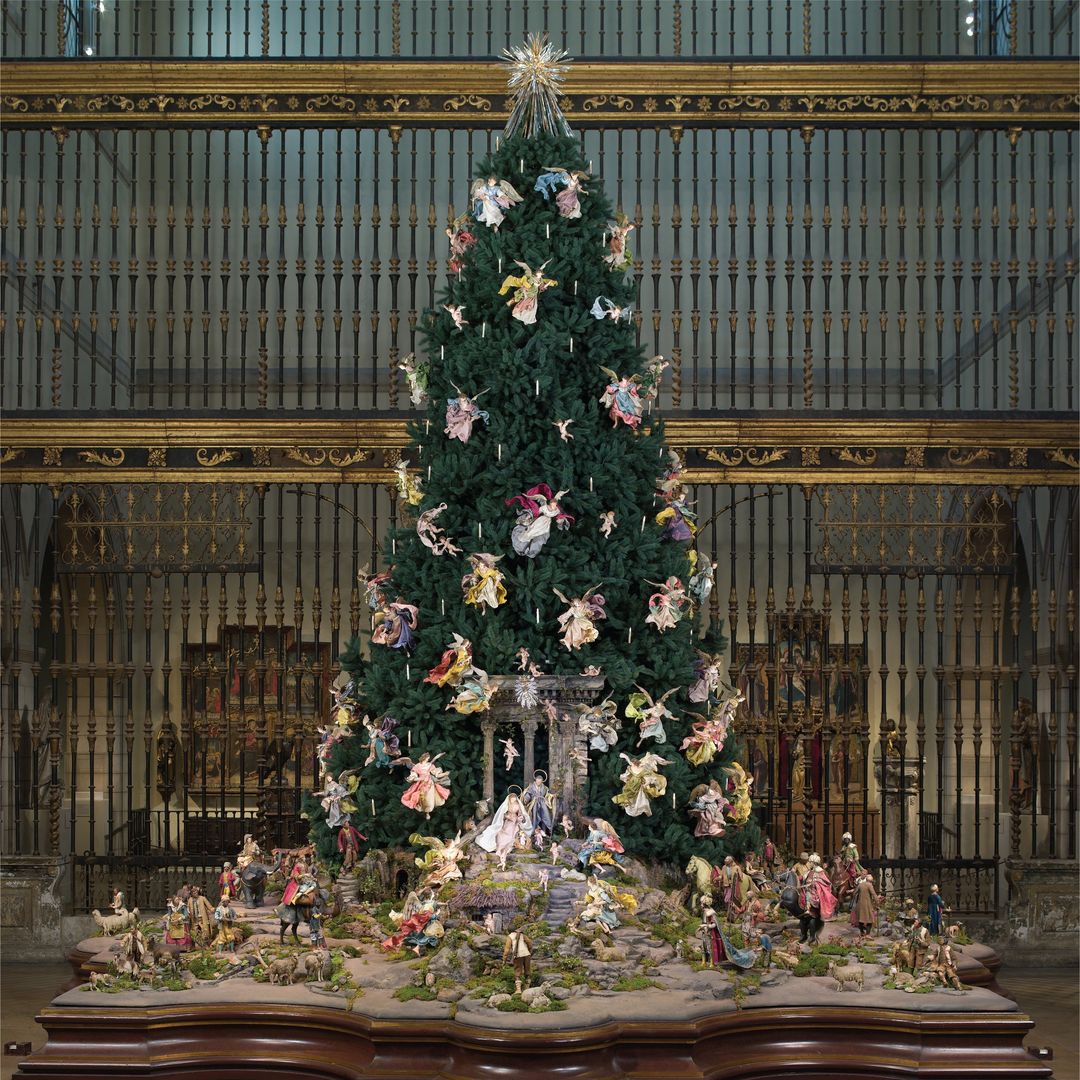The Enduring Legacy of 18th Century Naples
While the first nativity scene is widely attributed to St. Francis of Assisi, by the 13th and 14th centuries they were ubiquitous throughout Italy. It was in Naples, however, under the rule of Charles VII (later becoming King Charles III of Spain) that the art of the crèche was elevated to a high decorative art form as he wanted to compete with the artistry in other European courts. His passion (he owned over 6,000 créches) inspired other aristocrats, the court and eventually the public to create their own, including not only religious scenes but the culture of every day life in Naples. At Colnaghi gallery in London, a current exhibit celebrates “the enduring creative legacy of Old Master Artists and artisans from Naples,” showcasing a monumental Neapolitan Baroque crèche, also known as a presepe. Below, renowned scholar of 18th-century Neapolitan art, Carmine Romano explores the history and craftsmanship of this installation at the gallery.
As detailed in the Colnaghi catalogue, “When this art form was a living expression of the reality of its own time, no less attention was paid to the figures, the animals, the artifacts, and even the most minute details than to the overall scene. It was then that a felicitous confluence of the three elements necessary for this artistic genre occurred: first, rich patrons competing among themselves to see who could produce the most beautiful crèche; second, artists skilled in modeling clay or in woodcarving brought to these small-scale arts the same technical genius applied to the larger marble monuments in palaces and churches; third, an intellectual environment that reconciled the Neapolitan people’s sense of Catholicism with the open-mindedness of the Enlightenment and the originality of popular entertainment.”
 photo courtesy of the Metropolitan Museum
photo courtesy of the Metropolitan Museum
Today, the tradition continues, including the Metropolitan Museum, which each year displays its own 18th century Neapolitan nativity scene under their magnificent tree, above, in front of the 18th c. Spanish choir screen from the Cathedral of Valladolid. And it was childhood visits to the “angel tree” at the Met that inspired designer Mario Pollan, co-owner with his partner Daniel, of M & D Farm, the magical setting where my son recently had his wedding, to start collecting handmade figures of his own.


Fascinated by the artistry of the beautiful miniatures, from the lavish costumes to detailed heads of painted terracotta and painted glass eyes, Mario designs and creates a spectacular stage for his collections, all handmade by artisans who fabricate these figurines employing the same techniques used in the Neapolitan crèches 250 years ago.

As Mario explained to me, “I’ve been collecting for the last twenty years. The figures are made of terracotta and wood but the body is a wired hemp that makes them fully articulated and the clothes are real fabrics.

Every pieces is separate and functional, from the utensils and dishes to chairs etc… a little over the top, but I love the decadent baroque opulence of it all. One of the aspects I find fascinating is that this art form and craftsmanship has never died and continues to be produced in the 21st century.”

four photos above courtesy of Mario Pollan and Daniel Buenos
Thank you to Mario for sharing your magnificent work and cheers to a legacy of craftsmanship from Naples and beyond.


 photo courtesy of the Metropolitan Museum
photo courtesy of the Metropolitan Museum
DIVINE!!! franki
So fascinating – and isn’t Mario beyond talented?
The Met’s display is mesmerizing and inspirational!
We plan trips to New York at Christmas time just so we can view it, over and over again.
Enchanted by the scope of the village scene, the detail and the quality of workmanship, you will never forget the experience of seeing it up close and personal.
The Met’s is beautiful and Mario’s just might be even larger with the same craftsmanship!
Thank you, Stacey!
My pleasure Tania – Hope all is well. Wishing you a very merry!
The Met’s display is mesmerizing and inspirational!
We plan trips to New York at Christmas time just so we can view it, over and over again.
Enchanted by the scope of the village scene, the detail and the quality of workmanship, you will never forget the experience of seeing it up close and personal.
You might be interested in a piece I did that 1stdibs.com Introspective published this Monday on a show of Catholic sculptures at the Hispanic Society in Upper Manhattan. Same sets of skills! THanks for sharing this.
Thanks Wendy, I’ll take a look. Happy holidays to you!
Hi Stacey,
What a fascinating post
Such intricacies of beauty and artistry.
Thank you!
Thank you Patricia – I found it fascinating as well!
The Carnegie Museum in Pittsburgh has a spectacular collection!
Interesting! Love the back story!
Fabulous…these reminded me of the Ojai sculptor, George Stuart.
His historical figures have an entire wing devoted to them at the Ventura Museum of Art and History in Ventura, California.
Born in 1929, he is also a historian and I heard him deliver a talk on some of the figures, grouped by association or family. These figures are amazingly life-like, detailed and authentic to the clothing worn at the time, with the wigs, the jewelry, and fabrics.
I do not know if he is still living but this exhibit is a must-see.
I had to look him up – he is still alive and his work id fascinating! Thanks for the insight!
Can one purchase these?
Are you referring to the figures?
Is the Colnaghi catalog available for purchase.
Hi Nancy – I’m not sure but have inquired on your behalf.
Hi Nancy – I just heard from Colnaghi and yes, the catalog is available for purchase – it is £40 plus delivery. You can write to Grace at contact@colnaghi.com to order and tell her I sent you!
You should check the praesepio at St. John Cantius church in Chicago
http://www.cantius.org